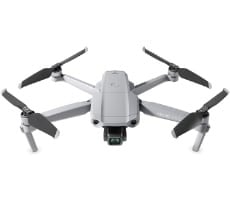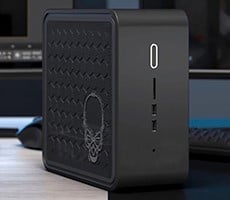New Matter MOD-t 3D Printer Review: Low Cost, User-Friendly Creation
One of our biggest concerns about the device is its size. The build envelope, or the maximum area the printer can print, is only 150 x 100 x 125mm (6 x 4 x 5in). The nozzle is also only 0.4mm in diameter. This means that the printer is only capable of creating relatively small objects. Other mass market 3D printers, like the popular Makerbot can create items that are up to nine inches wide and eight inches height. The depth this 3D printer can create is particularly limiting. The MOD-t can only print items that are 4 inches thick while other mass market 3D printers can print items that are 6-10 inches thick. Also, unlike many 3D printers, the MOD-t does not calibrate with "bed-leveling" because the build platform moves on two axis. None of the calibration process is manual.
The device’s mechanism slides the build plate across drive rods at a consistent height. The build plate is constructed of a thermoplastic resin. This material does not require any additional adhesive and is a popular choice for 3D printers that use Polylactic Acid (PLA) or Acrylonitrile Butadiene Styrene (ABS) filament for build material.
The MOD-t uses a printing process called “fused filament fabrication.” The device deposits a filament of a material on top and alongside the same material through heat. The printer uses a 1.75mm-thick PLA filament. PLA is an environmentally friendly and biodegradable thermoplastic, that is typically made from renewable sources such as corn or tapioca. PLA will eventually decompose into a harmless lactic acid with an SPI resin code of 7. Unfortunately 3D-printed items will not be labeled as such, and therefore cannot be taken to a recycling center.

The printer is operated through a browser-based interface that can be accessed on most computers. The device can be accessed through Wifi or connected to a computer with a USB 2.0. OS X 10.7+, Windows 7+ are required for set-up and it supports .STL and .OBJ file types. There is not currently an app for the MOD-t printer, so users will need to open in the New Matter website on their mobile device, notebook or desktop, in a web browser, where you can install software, load-up models and print.
Overall, replacement pieces and consumables for the machine are comparable to other 3D printers. 1kg of filament is $29.99 while 0.5kg is $19.99. The special pearl filament is $29.99 for 0.5kg. The regular filament comes in fourteen colors while the pearl filament is available in seven. The surface print plate is replaceable and is $14.99 for three in a pack.
Multiple different-colored filaments can add up however. Thankfully, the prints can be painted with inexpensive materials you would find in a craft store. There is currently free shipping for orders over $50 and educators do receive a discount. Users do not need expensive, high-tech computers or deep pocketbooks in order to purchase and use the printer. In this way, the MOD-t, as claimed, is indeed fairly consumer-friendly.






